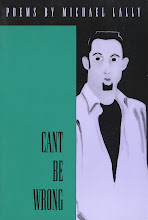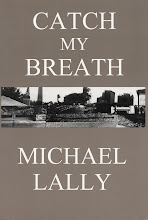I was born in Orange, New Jersey, and grew up next door. I had cousins who lived there and later a brother-in-law's family, in the section called "The Valley"—which was what locals called the area that stretched from Orange through West Orange to South Orange, where I was raised (there was an East Orange as well).
It was basically the working-class and poor neighborhoods of those towns, and back then it was predominantly Irish, Italian and Polish with a sprinkling of Jewish and black (all words that only approximate what the people were but was basically what we called each other then, only "black" would have been "colored" or "Negro") and now is more Mexican, Caribbean, African, Asian, South and Central American, etc.
There were several factories that loomed over the neighborhoods, mostly in Orange. When I first returned to Jersey in the last year of the last century, on the train ride or driving my car through those old Orange "Valley" neighborhoods, most of the now empty, trashed factories remained—"brown sites" that the federal and state and local governments hadn't cleaned up yet or rehabilitated in any way.
As throughout history, there were always more progressive and forward looking people in "The Valley" as elsewhere, but essentially the perspective that translated into political activism only coalesced in the late 1950s and 1960s. Doctor Mindy Thompson Fullilove's parents were at the heart of local (and national) Civil Rights activism as she was growing up in Orange, and she shares some of that experience in this marvelously accessible book that approaches the urban experience as a mental health problem that can be solved with the right process, if not permanently and totally, at least intelligently, exuberantly and honestly.
Fullilove (full disclosure, I have recently become friends with the author after her enthusiastic response to my writing about our home grounds) weaves parts of her own history, including being the child of a mixed race marriage at a time when that was very unusual, with the story of her colleague and mentor, the French urbanist Michel Cantal-Dupart's theories and practice in healing cities, and with the stories of the people they each separately and at times together engage and impact in the healing of their neighborhoods and the reconnection of them to their wider urban areas.
What could have been a dry, academic analyses (after all, Fullilove is a scientist and her methods are scientific in the best sense of that term) of the plight of many urban environments and the hypothesis for a corrective solution, is instead a charmingly sweet and enlightening antidote (and anecdotal) to the story of what broke many cities apart: "urban renewal"—a devastating if well intentioned supposed "remedy" for urban poverty in the 1950s and '60s that Fullilove addressed in an earlier book: ROOT SHOCK (she's good at titles) and what can be done to bring those "sorted out" (in Fullilove's and other urbanists' term) cities together again.
Fullilove's narrative is as energetic and multi-focused as many urban neighborhoods are, as she hops from discussing the problems and telling the stories of not only Orange but Pittsburgh, Manhattan and various French locations, as well as others, while laying out a step by step corrective to the ways in which so many of the poorest urban areas have been separated from the rest of their urban environment, not just by the old "urban renewal" attempts at remedies that did more harm than good, but by the urban planning that gave us freeways and other massive building projects, often well intentioned but nonetheless displacing entire cultures and their interconnections.
Fullilove's academic credentials may be impressive (a multi-degreed psychiatrist, urbanist and environmentalist who teaches at Columbia University and came to specializing on the mental health of cities after early studies of AIDs and its relationship to place) but what's most striking about her writing is how clear and crisp and charming and sweetly optimistic it is, despite the troubles it documents.
Because in URBAN ALCHEMY, particularly, she not only suggests solutions but describes the results of attempting to carry them out, not always successfully but with enough success to inspire our engaged participation in resolving the problems of our own broken apart physical environments, as well as generate enough light to see a way out of our sorted-out urban enclaves and into a wider and more integrated (in every way) whole.
URBAN ALCHEMY is not just informative and thought provoking, it is a call to action for all of us wherever we live to become involved in healing our environments not just in terms of their, and our, physical health but maybe more importantly (especially as a starting point) their and our mental health.
Subscribe to:
Post Comments (Atom)

















2 comments:
Is that a William H. Johnson painting on the cover?
Indeed it is. Good eye brother.
Post a Comment